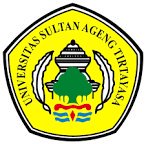STRATEGI PEMASARAN SELADA HIDROPONIK SECARA E-COMMERCE DAN KONVENSIONAL (SUATU KASUS PADA KEBUN RIYAN FARM)
Riyan Syarif Hidayatulloh, Suherna Suherna, Asih Mulyaningsih
Abstract
The Covid-19 pandemic is being felt in all sectors, including the agricultural sector and food UMKM. The agricultural sector is one of the priorities in dealing with the spread of Covid- 19 in Indonesia. The impact of the COVID-19 pandemic that was felt the most by farmers was the price of agricultural products which experienced a drastic decline due to the declining purchasing power of the people. This is not comparable to the effort and operational costs incurred by farmers when cultivating (Azamfirei, 2020). This research was conducted at the Riyan Farm Garden in Cipocok Jaya District, Serang City. This study aims to analyze the income of the hydroponic lettuce commodity as well as develop e-commerce and conventional marketing strategies that are appropriate to be implemented. The data used in this study are primary data and secondary data. Sampling was done by survey method, with 12 respondents. Collecting data using a questionnaire which is then analyzed using a SWOT analysis. The results of the calculation of the income analyst of hydroponic lettuce for the cost of production is Rp. 13,000/Kg. The profit obtained in terms of per kilogram on the sale of lettuce E-commerce is Rp. 7,000/Kg, while for conventional lettuce it is Rp. 2,603/Kg. The right strategy to be implemented based on the results of the SWOT analysis is to maintain existing potential markets and expand marketing reach. Optimizing cropping patterns according to SOPs to avoid production failures. Maintain product quality, manage product availability and increase product quantity. Innovate on products and add business partners to expand marketing.
Keywords
Marketing Strategy, Hydroponic Lettuce, E-commerce, Conventional and Income
References
Azamfirei R. (2020). The 2019 Novel Corona virus: A Crown Jewel of Pandemics? The Journal of Critical Care Medicine 6 (1): p3-4. Darmawan, Deni. 2013. Metode Penelitian Kuantitatif. PT. Remaja Rosdakarya. Bandung. 330 hal. David, Fred. R. 2011. Manajemen Strategis : Konsep. Edisi Tujuh. PT. Prenhallindo. Jakarta. Direktorat Jendral Hortikultura 2019. Statistik Produksi Hortikultura. Kementrian Pertanian Husaini, A. F. (2017). Pengaruh Modal Kerja, Lama Usaha, Jam Kerja dan Lokasi Usaha terhadap Pendapatan Monza di Pasar Simalingkar Medan . Jurnal Visioner & Strategis, 111-126. Kasmir, J. (2008). Studi Kelayakan Agribisnis. Jakarta: Kencana Prenada. Rangkuti, Freddy. 2009. Analisis SWOT Teknik Membedah Kasus Bisnis. Jakarta: PT. Gramedia Pustaka Umum Syarifuddin, A. K. (2005). Pengantar Ekonomi Produksi Pertanian. Banjarmasin: Universitas Lambung Mangkurat Banjarbaru.
DOI:
http://dx.doi.org/10.33512/jat.v15i2.17931
Refbacks
- There are currently no refbacks.
Copyright (c) 2022 Riyan Syarif Hidayatulloh, Suherna Suherna, Asih Mulyaningsih

This work is licensed under a
Creative Commons Attribution-NonCommercial-ShareAlike 4.0 International License.
Editorial Office
Jurnal Agribisnis Terpadu
Jurusan Agribisnis Universitas Sultan Ageng Tirtayasa
Jl. Raya Palka KM. 03 Sindangsari, Kecamatan Pabuaran, Kabupaten Serang,
Provinsi Banten 42163 Telp. (0254) 3204321
Email: [email protected]








